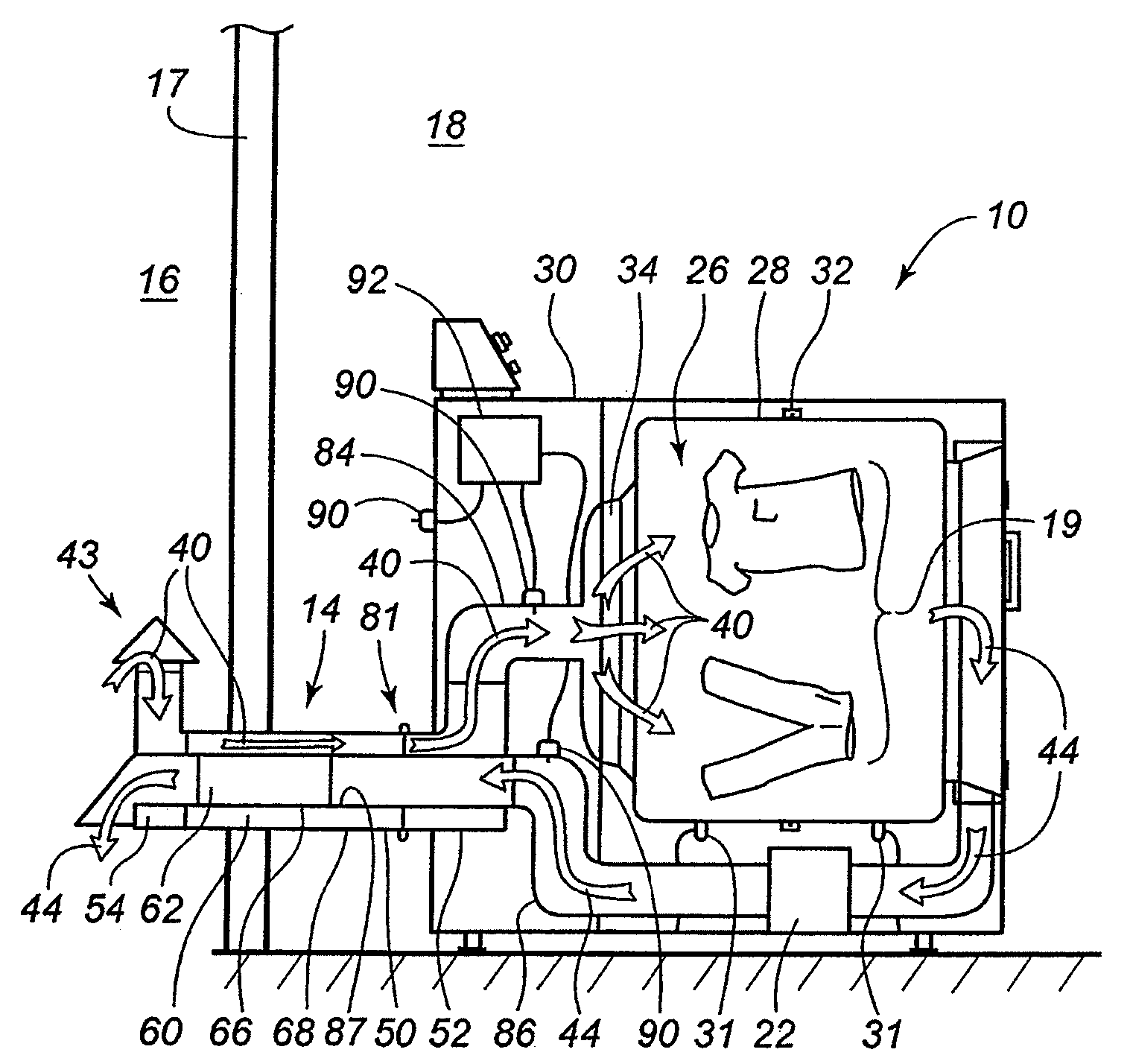Dryer Configured for Fresh Air Induction
a technology of fresh air and dryer, which is applied in the direction of drying machines, drying machines with progressive movements, drying machines, etc., can solve the problems of inefficient use of appliances, inability to adjust the condition of the air within the building, and inability to activate other less efficient devices
- Summary
- Abstract
- Description
- Claims
- Application Information
AI Technical Summary
Benefits of technology
Problems solved by technology
Method used
Image
Examples
Embodiment Construction
[0022]Turning now to the figures, FIG. 1 illustrates a dryer 10 and a dual flow duct 14 according to the teachings of an embodiment of the present invention. The dryer 10 advantageously draws air from the exterior 16 of the building 17 rather than conditioned air from the interior 18 of the building 17 to dry moist goods 19 within the dryer 10. This configuration significantly reduces the amount of conditioned air within the building 17 that is needlessly exhausted from the building 17 during a drying cycle and lost to the exterior 16 of the building 17. Advantageously, by reducing the amount of conditioned air that is exhausted from the building 17, the same amount of exterior, unconditioned air, is prevented from entering the building 17. By reducing the amount of unconditioned air that is added to the building 17, the internal conditions of the building 17 are not significantly altered during the drying process, thereby reducing the work load, and energy use, of the HVAC system o...
PUM
 Login to View More
Login to View More Abstract
Description
Claims
Application Information
 Login to View More
Login to View More - R&D
- Intellectual Property
- Life Sciences
- Materials
- Tech Scout
- Unparalleled Data Quality
- Higher Quality Content
- 60% Fewer Hallucinations
Browse by: Latest US Patents, China's latest patents, Technical Efficacy Thesaurus, Application Domain, Technology Topic, Popular Technical Reports.
© 2025 PatSnap. All rights reserved.Legal|Privacy policy|Modern Slavery Act Transparency Statement|Sitemap|About US| Contact US: help@patsnap.com



